Types of Jade Plants (Crassula): How to Identify, Grow & Care for Each One

Jade plants, scientifically known as Crassula ovata, are beloved succulent shrubs known for their tree-like appearance, glossy, fleshy leaves, and remarkable longevity. They are native to South Africa and Mozambique. Here are the key characteristics:
| Feature | Description |
|---|---|
| Scientific Name | Crassula ovata |
| Common Names | Jade plant, money plant, lucky plant, friendship tree |
| Origin | South Africa and Mozambique |
| Lifespan | Can live for 50 to 100 years with proper care |
| Key Features | Thick, woody stems; succulent, oval-shaped leaves; can produce small, star-shaped white or pink flowers in winter |
Symbolism and Cultural Meaning
Jade plants are deeply embedded in cultural traditions and are widely regarded as symbols of good fortune.
- Prosperity and Luck: Often called the “money plant,” their round, coin-shaped leaves are believed to attract financial abundance and good luck, especially in Feng Shui practices. Placing a jade plant in the southeast “wealth corner” of your home or office is thought to activate financial energy.
- Friendship and Growth: Known as the “friendship tree,” they are a popular gift to symbolize strong, growing relationships. Their slow, steady growth is also seen as a reminder of personal progress.
How to Care for Your Jade Plant
Jade plants are low-maintenance and perfect for beginners, provided you follow a few key rules.
- Light: They thrive in bright, indirect light and can tolerate some direct sun. Several hours of light daily helps maintain compact growth and may bring out red edges on the leaves.
- Watering: Use the “soak and dry” method: water deeply only when the topsoil is completely dry, then let excess water drain. Overwatering is the main cause of problems and can lead to root rot.
- Soil: Use a well-draining potting mix, such as a cactus or succulent blend.
- Temperature: Protect from frost. They prefer average room temperatures between 65-75°F (18-24°C) and will be killed by freezing conditions.
Read more about How to care for Jade plants.
Exploring the Different Types of Jade Plants
1. Classic Jade Plant (Crassula ovata)
The Classic Jade is the original and most recognizable type, with plump, oval-shaped leaves and woody stems that give it a miniature tree-like appearance. Mature plants can reach up to 3–6 feet tall and occasionally bloom with small, star-shaped white or pink flowers in winter.
Identification: Glossy, oval, dark green leaves; tree-like appearance; leaves may develop red edges in bright sun.
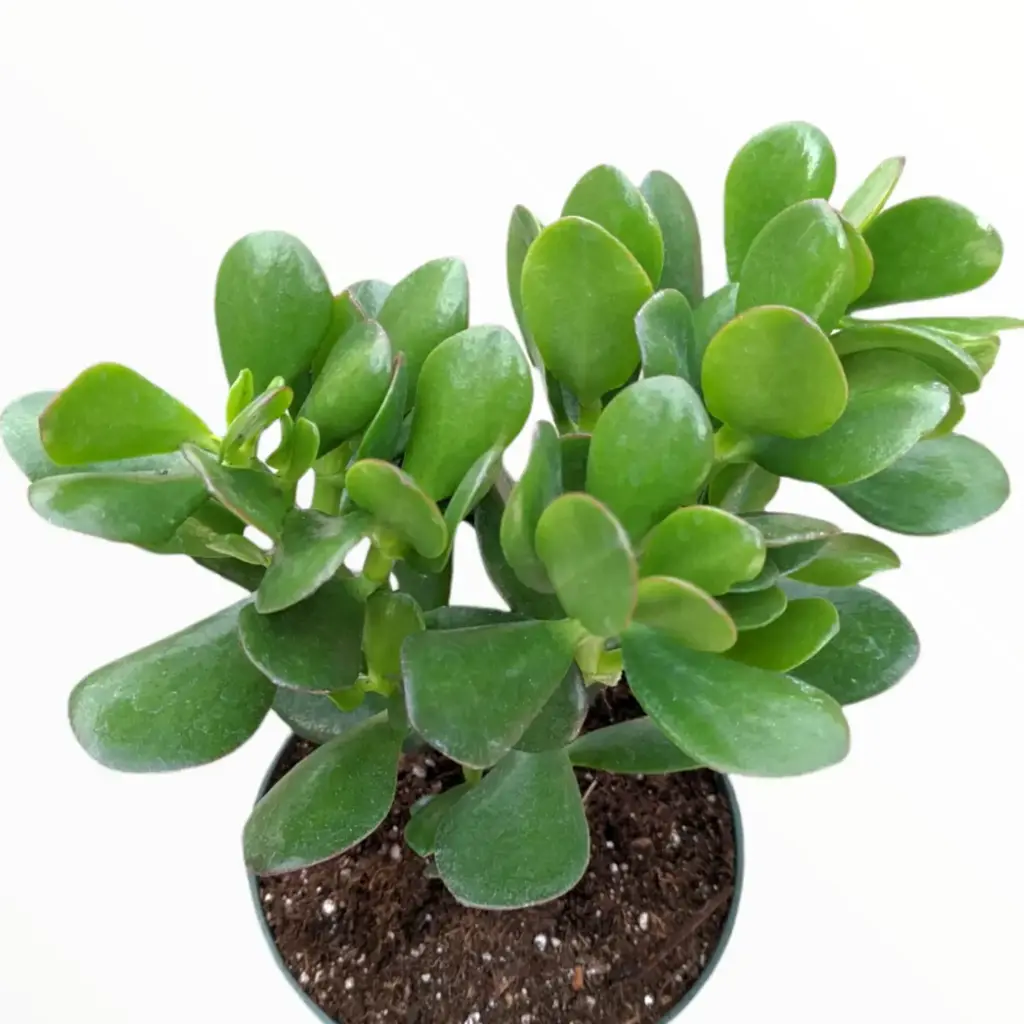
2. Gollum Jade (Crassula ovata ‘Gollum’)
Named after the Lord of the Rings character, the Gollum Jade has long, tubular leaves with red-tinted tips that resemble trumpet-like fingers.
Identification: Tubular, finger-like leaves with reddish tips; tips have a suction cup-like opening.
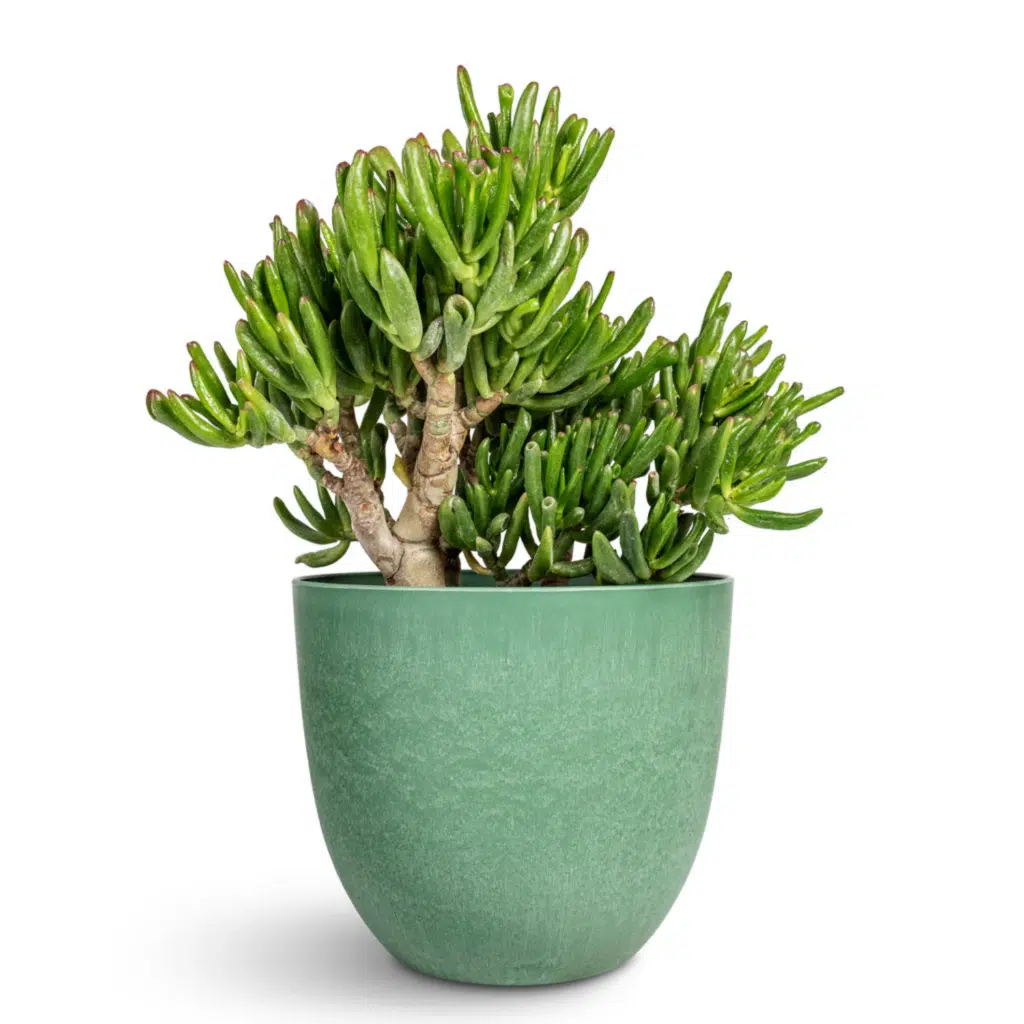
3. Hobbit Jade (Crassula ovata ‘Hobbit’)
The Hobbit Jade features elongated, spoon-shaped leaves that curl inward, resembling the rounded ears of a hobbit’s hat. It develops a thick base, making it a favorite among bonsai enthusiasts.
Identification: Tubular leaves that curl inwards, resembling a hobbit’s pipe; often has reddish tips.
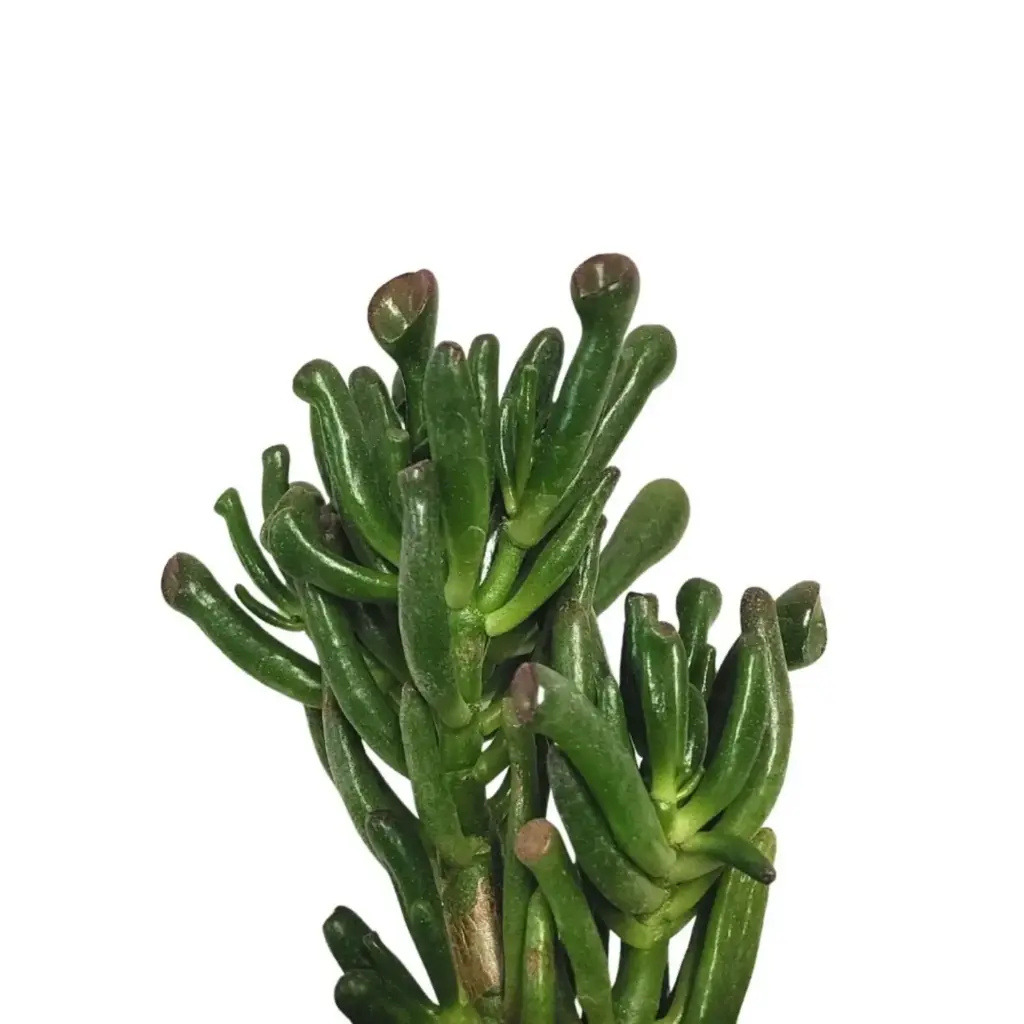
4. Variegated Jade (Crassula ovata ‘Variegata’)
This elegant cultivar features green leaves streaked with creamy-white or yellow patterns, adding brightness and contrast to any indoor collection, and can live for up to 70 years with proper care.
Identification: Green leaves with creamy-white or yellow stripes/patterns; edges may blush pink in sun.

5. Hummel’s Sunset (Crassula ovata ‘Hummel’s Sunset’)
A show-stopper, Hummel’s Sunset displays golden-yellow leaves edged with red that intensify with more sunlight — mimicking a glowing sunset.
Identification: Vibrant golden-yellow leaves with red margins; colors intensify with bright light.

6. Crosby’s Compact (Dwarf Jade) (Crassula ovata ‘Crosby’s Compact’)
A smaller, denser version of the Classic Jade, the Crosby’s Compact features tightly clustered leaves that make it ideal for small spaces or tabletops.
Identification: Dwarf, compact growth; smaller, rounded leaves that display shades of red, yellow, and orange.
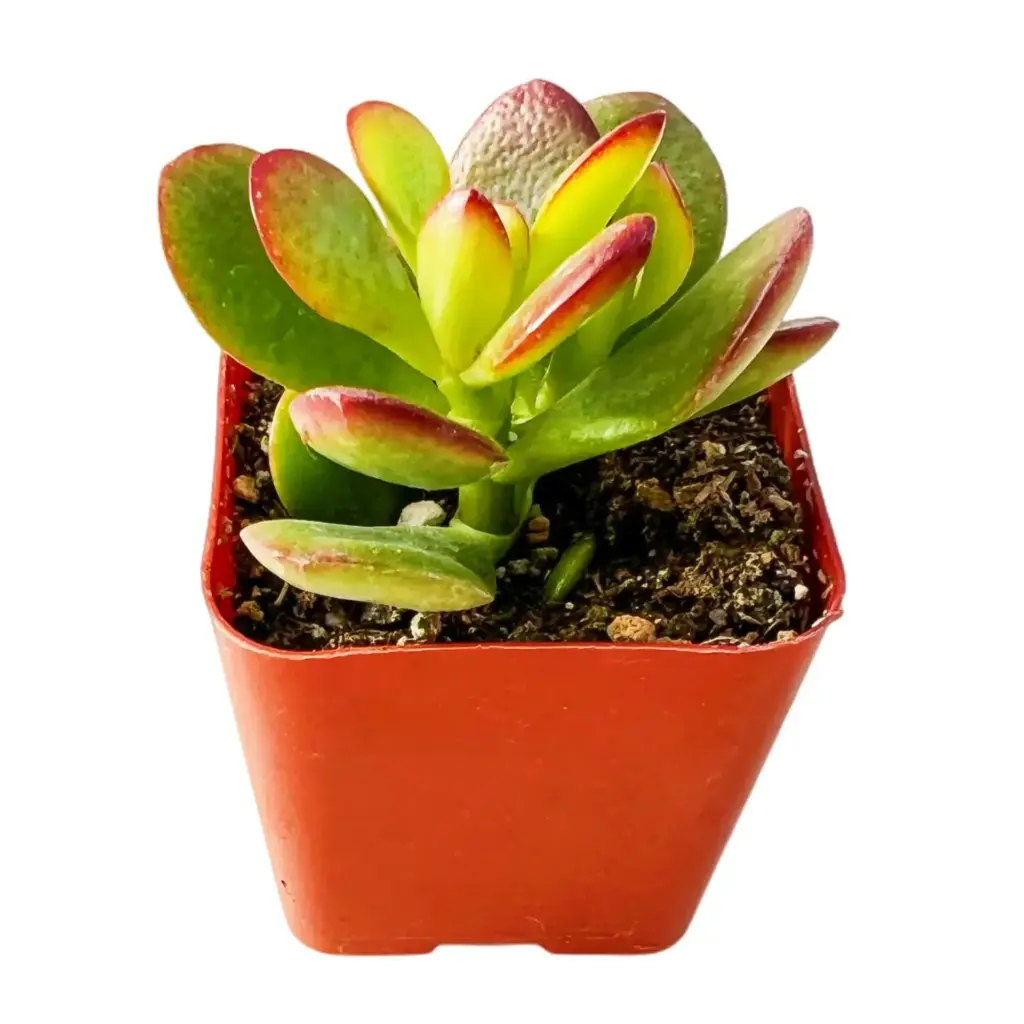
7. Ripple Jade (Crassula arborescens ‘Undulatifolia’)
Known for its thin, wavy, and twisted leaves. This is its most distinctive feature. Produces clusters of white to pink, star-shaped flowers in late winter or spring, though blooming is rare when grown as a container plant
Identification: Bluish-gray or blue-green leaf color. The edges often develop a purple or fuchsia tinge, especially when grown in bright light
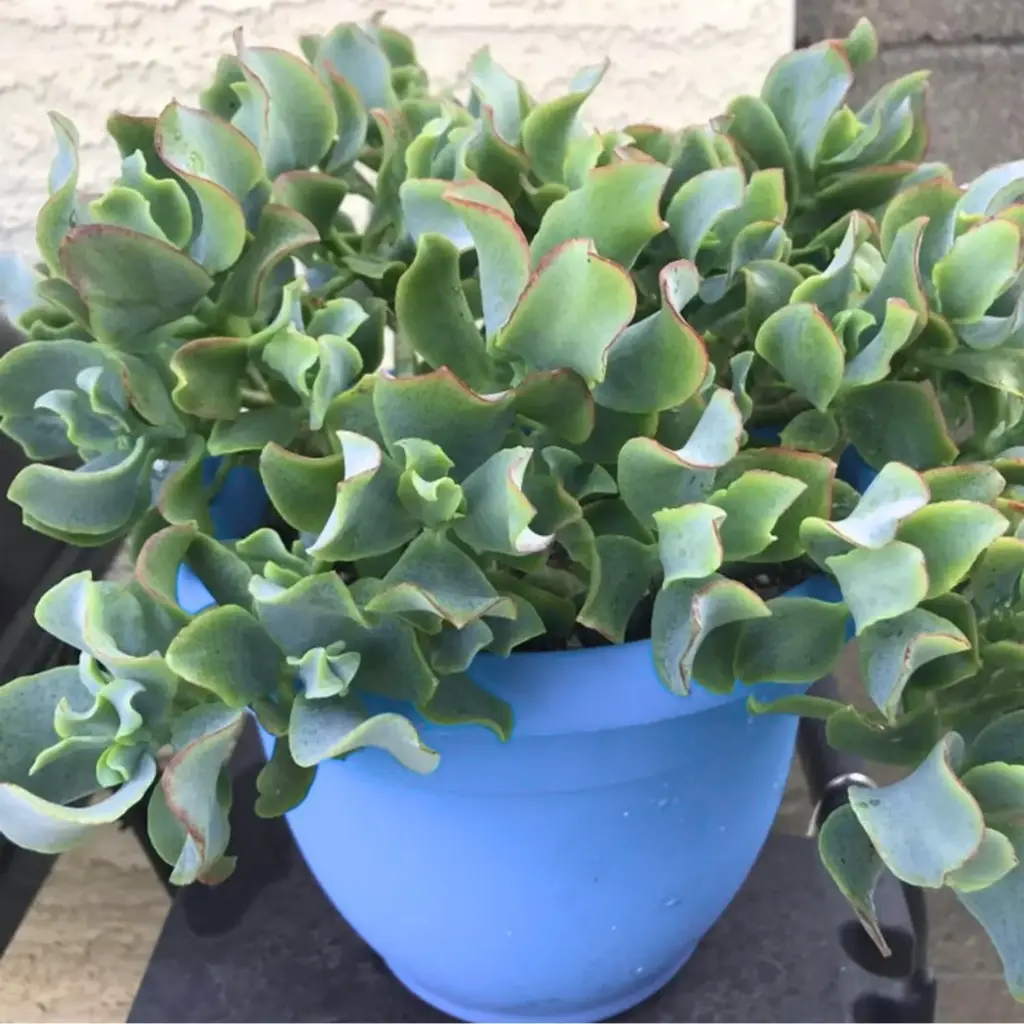
8. Silver Dollar Jade (Crassula arborescens)
The Silver Dollar Jade, sometimes called Blue Buddha Bush, has round, silvery-blue leaves that are more circular than those of the Classic Jade.
Note: A different species. Round, silvery-blue, coin-like leaves with red edges.
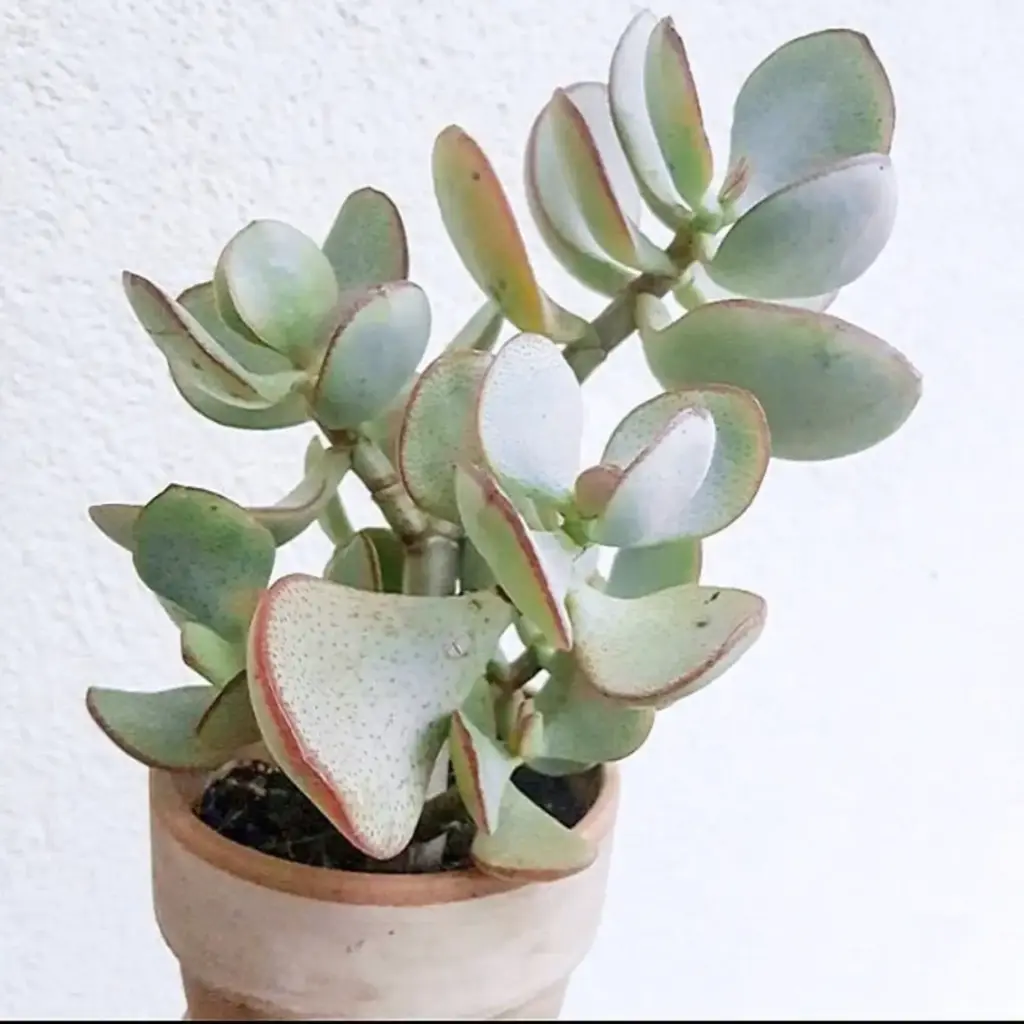
9. Lemon & Lime Jade (Crassula ovata ‘Lemon & Lime’)
This striking cultivar combines green leaves with bright lemon-yellow stripes — perfect for adding a cheerful splash of color to any setting.
Identification: Bright green leaves with striking lemon-yellow margins; variegation can fade in low light.

10. Botany Bay Jade (Crassula ovata ‘Botany Bay’)
The Botany Bay Jade has light green leaves that turn reddish when stressed or exposed to bright light, giving it a naturally dramatic look.
Identification: Compact, bushy habit; light greenish-yellow leaves that develop red tips when stressed.
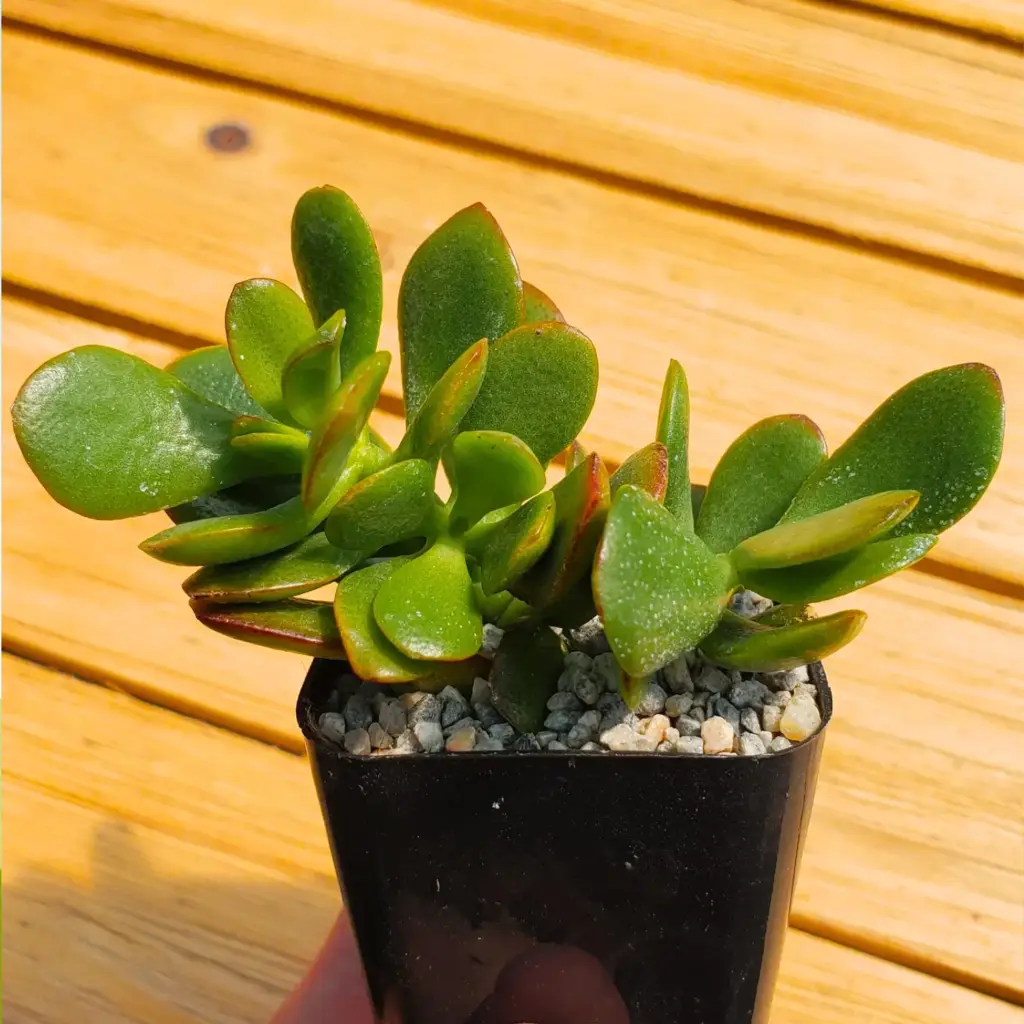
🔬 Important Clarifications
- Toxicity: A crucial point for pet and child owners is that jade plants are considered toxic to cats, dogs, and humans if ingested.
- “Real” Jade Plants: There is some debate in the gardening community. Some experts reserve the term “Jade Plant” strictly for varieties of Crassula ovata. Others, like Crassula arborescens (Silver Dollar Jade), are closely related and share the common name but are a different species. Your article correctly notes this distinction.
- Flowering: Getting a jade plant to flower indoors is challenging. It requires cool, dry conditions with long nights (short day lengths) to trigger blooming.
Conclusion
From the classic Crassula ovata to colorful cultivars like Hummel’s Sunset and Lemon & Lime, jade plants offer endless variety for collectors and beginners alike. Beyond their beauty, they’re enduring symbols of prosperity, balance, and positive energy — a living reminder that growth, when tended with care, leads to abundance.
Whether displayed as a bonsai, potted accent, or lucky plant in your wealth corner, a jade plant will reward patience with longevity and quiet, graceful charm.
